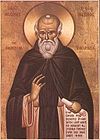
September 30 - Eastern Orthodox liturgical calendar - October 2

March 24 - Eastern Orthodox liturgical calendar - March 26

April 2 - Eastern Orthodox liturgical calendar - April 4

April 11 - Eastern Orthodox liturgical calendar - April 13

April 13 - Eastern Orthodox liturgical calendar - April 15

April 15 - Eastern Orthodox liturgical calendar - April 17

June 7 - Eastern Orthodox Church calendar - June 9

June 17 - Eastern Orthodox Church calendar - June 19

June 22 - Eastern Orthodox Church calendar - June 24

June 25 - Eastern Orthodox Church calendar - June 27

June 27 - Eastern Orthodox Church calendar - June 29

January 11 - Eastern Orthodox liturgical calendar - January 13

February 4 - Eastern Orthodox liturgical calendar - February 6

February 9 - Eastern Orthodox liturgical calendar - February 11

February 11 - Eastern Orthodox liturgical calendar - February 13

February 14 - Eastern Orthodox liturgical calendar - February 16

·

February 20 - Eastern Orthodox liturgical calendar - February 22

February 25 - Eastern Orthodox liturgical calendar - February 27

March 5 - Eastern Orthodox liturgical calendar - March 7





